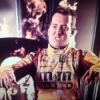Results of major AAA Big Car races in 1947 (20 miles or longer):
March 30, Lakewood Speedway, Atlanta (GA), 20 miles1 Bill Holland (PA), Malamud/Offenhauser, 14'28.51"
2 Walt Ader (NJ), Campbell=O'Day/Offenhauser
3 Spider Webb (CA), Johnston/Offenhauser
4 Verden Morelock (GA), n/a
5 Buddy Shuman (NC), n/a
6 Earl Johns (NJ), Scheid/Riley
FT Holland, 39.21"
April 13, New Jersey State Fairgrounds, Trenton (NJ), 20 miles1 Bill Holland (PA), Malamud/Offenhauser, 15'13.33"
2 Tommy Hinnershitz (PA), Hinnershitz=Garnant/Offenhauser
3 Lee Wallard (NY), Sherk/Winfield
4 Mike Magill (NJ), n/a
5 Dutch Culp (PA), Culp/Cragar
6 n/a
FT Walt Brown (NY), Marion/Offenhauser, 41.45"
May 11, Langhorne Speedway, Langhorne (PA), 20 miles1 Bill Holland (PA), Malamud/Offenhauser, 13'19.62"
2 Tommy Hinnershitz (PA), Hinnershitz=Garnant/Offenhauser
3 Hank Rogers (NJ), Fetzer/Offenhauser
4 Earl Johns (NJ), Scheid/Riley
5 Lee Wallard (NY), n/a
6 Paul Handshew (PA), n/a
FT Walt Ader (NJ), Nyquist=Cunningham/Offenhauser, 35.83"
May 30, Indianapolis Motor Speedway, Speedway (IN), 500 miles1 Mauri Rose (OH), Moore/Offenhauser, 4:17'52.17"
2 Bill Holland (PA), Moore/Offenhauser
3 Ted Horn (CA), Henning=Maserati
4 Cliff Bergere (CA) [Herb Ardinger (PA)], Novi
5 Jimmy Jackson (IN), Henning=Boyle/Offenhauser
6 Rex Mays (CA), Bowes
FT Holland, 4'39.60" (4 laps), 1'09.57" (1 lap)
June 8, Wisconsin State Fair Park, West Allis (WI), 100 miles1 Bill Holland (PA), Peters=Moore/Offenhauser, 1:08'44.60"
2 Rex Mays (CA), Flavell=Sparks-Thorne
3 Paul Russo (WI), Wolfe=Shaw/Offenhauser
4 George Connor (CA), Walsh/Offenhauser
5 Charley van Acker (IN), Lencki=Lyons/Offenhauser
6 Billy Devore (CA), Schoof/Offenhauser
FT Tony Bettenhausen (IL), Belanger/Offenhauser, 37.36"
June 22, Langhorne Speedway, Langhorne (PA), 100 miles1 Bill Holland (PA), Peters=Moore/Offenhauser, 1:08'23.59"
2 Emil Andres (IL), Belanger=Sparks-Weirick/Offenhauser
3 Walt Brown (NY), Rassey=Miller/Offenhauser
4 Steve Truchan (IN) [Billy Devore (CA)], Schoof/Offenhauser
5 Ted Horn (CA), Horn/Offenhauser
6 Charley van Acker (IN), Lencki=Lyons/Offenhauser
FT Andres, 34.67"
July 4, Lakewood Speedway, Atlanta (GA), 77 miles** stopped short of 100 miles (accident)
1 Walt Ader (NJ), Sparks-Weirick/Offenhauser, 1:01'25.63"
2 Bill Holland (PA), Peters=Moore/Offenhauser
3 Eddie Zalucki (MI), Dreyer
4 Ted Horn (CA), Horn/Offenhauser
5 Milt Fankhauser (KY), Fankhauser=Miller/Offenhauser
6 Charley van Acker (IN), Lencki=Lyons/Offenhauser
FT Rex Mays (CA), Bowes, 40.20"
July 13, Bainbridge Park, Cleveland (OH), 92 miles** stopped short of 100 miles (rain)
1 Ted Horn (CA), Horn/Offenhauser, 1:03'14.89"
2 Bill Holland (PA), Peters=Moore/Offenhauser
3 Charley van Acker (IN), Lencki=Lyons/Offenhauser
4 Tony Bettenhausen (IL), Wolfe=Shaw/Offenhauser
5 George Connor (CA), Walsh/Offenhauser
6 Billy Devore (CA), Corley=Petillo/Offenhauser
FT Walt Brown (NY), Rassey=Miller/Offenhauser, 39.43"
July 27, Wisconsin State Fair Park, West Allis (WI), 100 miles1 Charley van Acker (IN), Lencki=Lyons/Offenhauser, 1:09'47.88"
2 Duke Nalon (IL), Corley=Petillo/Offenhauser
3 Paul Russo (WI), Wolfe=Shaw/Offenhauser
4 Mel Hansen (CA), Lencki
5 George Connor (CA), Walsh/Offenhauser
6 Ted Horn (CA), Horn/Offenhauser
FT Tony Bettenhausen (IL), Olson/Offenhauser, 40.48"
August 17, Good Time Speedway, Goshen (NY), 100 miles1 Tony Bettenhausen (IL), Belanger/Offenhauser, 1:14'56.54"
2 Ted Horn (CA), Horn/Offenhauser
3 Charley van Acker (IN), Lencki=Lyons/Offenhauser
4 Duke Dinsmore (CA), Schoof/Offenhauser
5 George Connor (CA), Walsh/Offenhauser
6 Buster Warke (PA), Johnston=Sparks-Weirick/Offenhauser
FT Emil Andres (IL), Belanger=Sparks-Weirick/Offenhauser, 41.66"
August 21, Wisconsin State Fair Park, West Allis (WI), 20 miles1 Rex Mays (CA), Cracraft/Offenhauser, 13'25.70"
2 Tommy Hinnershitz (PA), Hinnershitz=Garnant/Ofenhauser
3 Mel Hansen (CA), Lencki
4 Myron Fohr (WI), Marchese/Offenhauser
5 Jackie Holmes (IN), Dreyer
6 Tony Bettenhausen (IL), Belanger/Offenhauser
FT Mays, 38.48"
August 22, Wisconsin State Fair Park, West Allis (WI), 20 miles1 Rex Mays (CA), Cracraft/Offenhauser, 13'47.42"
2 Jackie Holmes (IN), Dreyer
3 Myron Fohr (WI), Marchese/Offenhauser
4 Tony Bettenhausen (IL), Belanger/Offenhauser
5 Duke Dinsmore (CA), Schoof/Offenhauser
6 n/a
FT Mays, 39.36"
August 24, Wisconsin State Fair Park, West Allis (WI), 100 miles1 Ted Horn (CA), Horn/Offenhauser, 1:11'08.64"
2 Duke Nalon (IL), Corley=Petillo/Offenhauser
3 George Connor (CA), Walsh/Offenhauser
4 Rex Mays (CA) [Tony Bettenhausen (IL)], Belanger/Offenhauser
5 Emil Andres (IL), Belanger=Sparks-Weirick/Offenhauser
6 Paul Russo (WI), Wolfe=Shaw/Offenhauser
FT Duke Dinsmore (CA), Schoof/Offenhauser, 39.88"
September 28, New Jersey State Fairgrounds, Trenton (NJ), 20 miles1 Joie Chitwood (TX), Nyquist=Cunningham/Offenhauser, 15'06.52"
2 Tommy Mattson (DE), Culp=Schrader/Offenhauser
3 Mark Light (PA), Light/Dreyer
4 Hank Rogers (NJ), Fetzer/Offenhauser
5 Ed Terry (NJ), n/a
6 Dutch Culp (PA), Culp/Cragar
FT Chitwood, 42.41"
September 28, Illinois State Fairgrounds, Springfield (IL), 100 miles1 Tony Bettenhausen (IL), Belanger/Offenhauser, 1:04'51.08"
2 Ted Horn (CA), Horn/Offenhauser
3 Steve Truchan (IN), Truchan/Offenhauser
4 Jackie Holmes (IN), Dreyer
5 Charlie Rogers (MI), Jewell/Hal
6 Walt Ader (NJ), Corley=Petillo/Offenhauser
FT Emil Andres (IL), Belanger=Sparks-Weirick/Offenhauser, 36.58"
October 19, Williams Grove Speedway, Mechanicsburg (PA), 25 miles1 Ted Horn (CA), Horn/Offenhauser, 23'12.93"
2 Tommy Hinnershitz (PA), Hinnershitz=Garnant/Offenhauser
3 Jackie Holmes (IN), Dreyer
4 Hank Rogers (NJ), Fetzer/Offenhauser
5 Bill Holland (PA), Malamud/Offenhauser
6 Tommy Mattson (DE), Culp=Schrader/Offenhauser
FT Horn, 26.27"
November 2, Texas State Fairgrounds, Arlington Downs (TX), 101 miles1 Ted Horn (CA), Horn/Offenhauser, 1:10'25.20"
2 Paul Russo (WI), Wolfe=Shaw/Offenhauser
3 Emil Andres (IL), Belanger=Sparks-Weirick/Offenhauser
4 Rex Mays (CA), Sparks-Thorne
5 Eddie Zalucki (MI), Rassey=Miller/Offenhauser
6 Milt Fankhauser (KY), Fankhauser=Miller/Offenhauser
FT Duke Nalon (IL), Sparks-Weirick/Offenhauser, 40.02"
November 9, Lakewood Speedway, Atlanta (GA), 20 miles1 Joie Chitwood (TX), Nyquist=Cunningham/Offenhauser, 13'45.1"
2 Walt Brown (NY), Marion/Offenhauser
3 Fred Carpenter (NY), Hoppe=Teter/Hal
4 n/a
5 n/a
6 n/a
FT Ted Horn (CA), Horn/Offenhauser, 38.8"
Edited by Michael Ferner, 24 October 2012 - 08:12.
















